Brazil Signs Artemis Accords
Wednesday, 16 June 2021 07:25 Brazil is the latest country to sign the Artemis Accords, affirming its commitment to ensuring sustainable space exploration that adheres to a common set of principles benefiting all of humanity.
Brazil Minister of Science, Technology, and Innovation Marcos Pontes signed the document during a ceremony June 15 in Brasilia that featured President Jair Bolsonaro, Minister of Foreign Affairs C
Brazil is the latest country to sign the Artemis Accords, affirming its commitment to ensuring sustainable space exploration that adheres to a common set of principles benefiting all of humanity.
Brazil Minister of Science, Technology, and Innovation Marcos Pontes signed the document during a ceremony June 15 in Brasilia that featured President Jair Bolsonaro, Minister of Foreign Affairs C Coronal mass ejections and cosmic ray observations at Syowa Station in the Antarctic
Wednesday, 16 June 2021 07:25 Solar activities, such as CME(Coronal Mass Ejection), cause geomagnetic storm that is a temporary disturbance of the Earth's magnetosphere. Geomagnetic storms can affect GPS positioning, radio communication, and power transmission system.
Solar explosions also emit radiation, which can affect satellite failures, radiation exposure to aircraft crew, and space activity. Therefore, it is impo
Solar activities, such as CME(Coronal Mass Ejection), cause geomagnetic storm that is a temporary disturbance of the Earth's magnetosphere. Geomagnetic storms can affect GPS positioning, radio communication, and power transmission system.
Solar explosions also emit radiation, which can affect satellite failures, radiation exposure to aircraft crew, and space activity. Therefore, it is impo Total solar eclipses shine a light on the solar wind with help from NASA's ACE Mission
Wednesday, 16 June 2021 07:25 From traversing sand dunes in the Sahara Desert to keeping watch for polar bears in the Arctic, a group of solar scientists known as the "Solar Wind Sherpas" led by Shadia Habbal, have traveled to the ends of the Earth to scientifically observe total solar eclipses - the fleeting moments when the Moon completely blocks the Sun, temporarily turning day into night. With the images, they've uncover
From traversing sand dunes in the Sahara Desert to keeping watch for polar bears in the Arctic, a group of solar scientists known as the "Solar Wind Sherpas" led by Shadia Habbal, have traveled to the ends of the Earth to scientifically observe total solar eclipses - the fleeting moments when the Moon completely blocks the Sun, temporarily turning day into night. With the images, they've uncover A Probing Question: How Do You Fly the X-59 Accurately?
Wednesday, 16 June 2021 07:25 Mountains of data will be required if NASA's X-59 Quiet SuperSonic Technology airplane is going to help change the future of commercial supersonic flight over land, and a sophisticated suite of instruments is needed in the air and on the ground to collect it.
On the aircraft, these instruments are known as the air data system. A computer takes input from probes, sensors, and other devices
Mountains of data will be required if NASA's X-59 Quiet SuperSonic Technology airplane is going to help change the future of commercial supersonic flight over land, and a sophisticated suite of instruments is needed in the air and on the ground to collect it.
On the aircraft, these instruments are known as the air data system. A computer takes input from probes, sensors, and other devices SES Renews Long-Term Relationship with Comcast Technology Solutions
Wednesday, 16 June 2021 07:25 SES will continue delivering Comcast Technology Solutions' Managed Satellite Distribution service, formerly known as Headend in the Sky (HITS), that reaches hundreds of multichannel video programming distributor systems across the US.
SES recently renewed its long-term relationship with Comcast Technology Solutions (CTS), a division of Comcast Cable that provides media and entertainment te
SES will continue delivering Comcast Technology Solutions' Managed Satellite Distribution service, formerly known as Headend in the Sky (HITS), that reaches hundreds of multichannel video programming distributor systems across the US.
SES recently renewed its long-term relationship with Comcast Technology Solutions (CTS), a division of Comcast Cable that provides media and entertainment te European Robotic Arm enters service on the ISS
Wednesday, 16 June 2021 07:25 A robot must obey the orders given it by human beings, according to one of the three laws of robotics imagined by science fiction writer Isaac Asimov. On board humanity's only outpost in space, this obedience has turned into cooperation. Astronauts and robots are working together.
The latest robot to service the International Space Station is the European Robotic Arm (ERA). This android au
A robot must obey the orders given it by human beings, according to one of the three laws of robotics imagined by science fiction writer Isaac Asimov. On board humanity's only outpost in space, this obedience has turned into cooperation. Astronauts and robots are working together.
The latest robot to service the International Space Station is the European Robotic Arm (ERA). This android au LeoLabs to expand radar network to Europe
Wednesday, 16 June 2021 06:01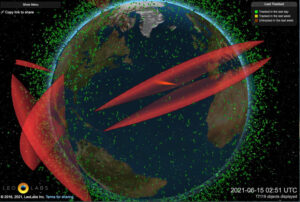
SAN FRANCISCO – LeoLabs plans to expand its global network of space-tracking radars to the Azores archipelago, an autonomous region about 1,500 kilometers off Portugal’s Atlantic coast.
The new S-band phased-array radar, which is scheduled to come online in early 2022, will improve the “timeliness and accuracy” of LeoLabs’ global coverage because the company does not operate radars at similar longitudes, Dan Ceperley, LeoLabs CEO and co-founder, told SpaceNews.
Chinese rocket with manned crew to blast off Thursday
Wednesday, 16 June 2021 05:10
Astronauts blasting off on Thursday for China's first manned mission to its new space station will have a choice of 120 different types of food and "space treadmills" for exercise during their stay, China's space agency said.
The mission will be China's longest crewed space mission to date and the first in nearly five years, as Beijing pushes forward with its ambitious programme to establish itself as a space power.
The astronauts will spend three months onboard the station, which has separate living modules for each of them, as well as a shared bathroom, dining area, and a communication centre to send emails and allow two-way video calls with ground control.
The trio will be able to work off their range of dinner options—which officials assured reporters were all both nutritious and tasty—on the space treadmills or bicycles.
China to launch first crew to new space station on Thursday
Wednesday, 16 June 2021 05:10
Astronauts blasting off on Thursday for China's first manned mission to its new space station will have a choice of 120 different types of food and "space treadmills" for exercise during their stay, China's space agency said.
The mission will be China's longest crewed space mission to date and the first in nearly five years, as Beijing pushes forward with its ambitious programme to establish itself as a space power.
The astronauts will spend three months onboard the station, which has separate living modules for each of them, as well as a shared bathroom, dining area, and a communication centre to send emails and allow two-way video calls with ground control.
The trio will be able to work off their range of dinner options—which officials assured reporters were all both nutritious and tasty—on the space treadmills or bicycles.
Nelson asks Senate appropriators for more HLS funding
Tuesday, 15 June 2021 22:55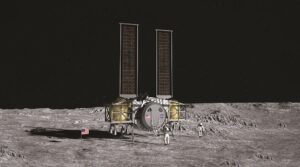
WASHINGTON — NASA Administrator Bill Nelson asked Senate appropriators to provide additional funding so NASA can support a second lunar lander developer, warning that the agency needed to stay ahead of a “very aggressive” Chinese space program.
Upcoming SpaceX mission a reusability milestone for national security launch
Tuesday, 15 June 2021 16:57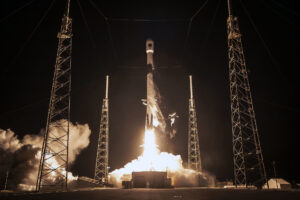
WASHINGTON — The upcoming SpaceX launch of a GPS 3 satellite scheduled for June 17 will be the first national security space mission to use a refurbished Falcon 9 booster. The U.S.
4iG to buy majority of Spacecom in a boost for Hungary’s first commercial satellite
Tuesday, 15 June 2021 14:20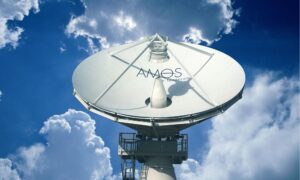
TAMPA, Fla. — Hungarian IT and communications company 4iG aims to buy 51% of Israeli satellite operator Spacecom to jump-start its international space ambitions.
Gellért Jászai, 4iG’s CEO, said buying a majority of Spacecom is an “important step for us in terms of knowledge transfer and the development of international strategic partnerships.
Northrop Grumman’s Minotaur 1 rocket launches three classified NRO payloads
Tuesday, 15 June 2021 12:57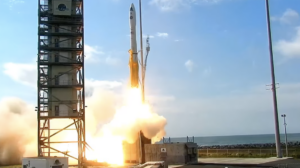
WASHINGTON — A Northrop Grumman Minotaur 1 four-stage solid fuel rocket launched three national security payloads for the National Reconnaissance Office on June 15 at 9:35 a.m. Eastern from the Mid-Atlantic Regional Spaceport at NASA’s Wallops Flight Facility in Virginia.
Launcher to develop orbital transfer vehicle
Tuesday, 15 June 2021 11:00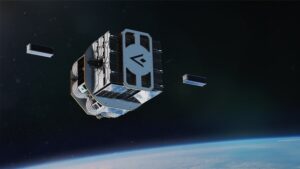
WASHINGTON — Small launch vehicle company Launcher announced June 15 that it is also working on an orbital transfer vehicle for small satellites that it plans to use on both its own rocket as well as SpaceX’s Falcon 9.
Space embrace
Tuesday, 15 June 2021 09:33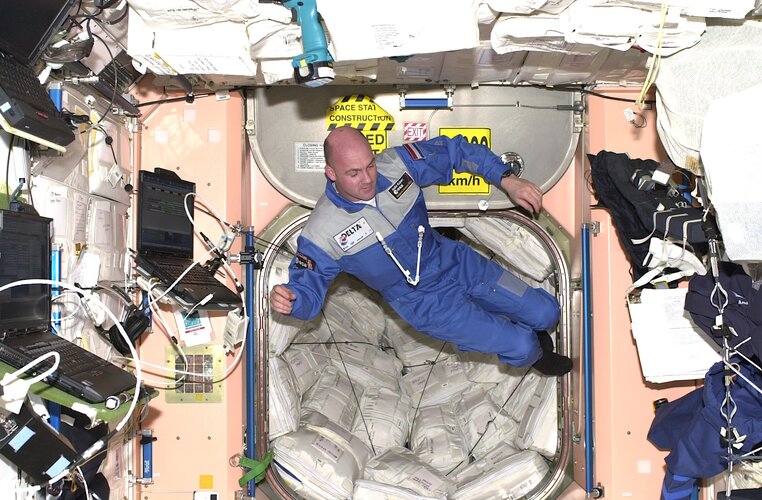 Image:
André Kuipers with a European Robotic Arm model on the Space Station
Image:
André Kuipers with a European Robotic Arm model on the Space Station 
